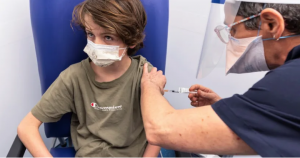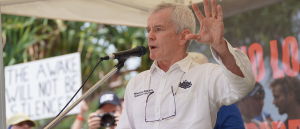Pandemrix vaccine: why was the public not told of early warning signs?

01 October 2018
Peter Doshi says “Multiple academic and government-led studies subsequently judged that the relation between Pandemrix and narcolepsy was likely to be causal”, and he includes reference to a paper authored by Markku Partinen et al, i.e. Increased incidence and clinical picture of childhood narcolepsy following the 2009 H1N1 pandemic vaccination campaign in Finland.[1]
In March 2013, Reuters published a special report describing the difficulties Markku Partinen faced in trying to raise the alarm about GlaxoSmithKline’s Pandemrix vaccine, and to have his research published.[2]
QUOTE:
At a Finnish medical convention in January 2011, a colleague approached neurologist Markku Partinen, laid a hand on his shoulder and said: “Markku, it’s going to be a bad year for you.”
In the following months, other scientists ridiculed him, questioned his methods and motives, and raised doubts about his mental stability. Colleagues began crossing the street to avoid him, he says.
Partinen, director of the Helsinki Sleep Clinic and Research Centre, had raised the alarm about a GlaxoSmithKline vaccine called Pandemrix. He had discovered the drug, used to protect people from H1N1 swine flu, may be linked to a jump in cases of narcolepsy, a rare sleep disorder, in children and young people. He knew his findings might help limit the risks of narcolepsy for other children around the world, but was fearful nonetheless. The work was bound to generate scientific suspicion and public anxiety. Indeed, he struggled to get his paper on the vaccine published.
His story underscores an increasingly tough challenge for scientists balancing compelling data with public concern over vaccines and their side effects. Treatments which stimulate immunity to disease are highly controversial. In the past couple of decades – especially after a British doctor made now-discredited claims linking the measles-mumps-rubella (MMR) vaccine to autism – the field has become even more charged. After the false alarm sounded by British doctor Andrew Wakefield, some scientists say they are more hesitant to credit reports of potential side effects from vaccines.
END OF QUOTE.
Partinen is keen to distance himself from Andrew Wakefield, calling Wakefield a “fake”.
The Reuters article provides another scientist’s perspective:
QUOTE:
At a medical centre on the outskirts of Helsinki, another Finnish scientist agrees with Partinen’s results and is probing the mechanics of the Pandemrix-narcolepsy link, which she thinks may have to do with the vaccine’s super-charging effect on the immune system.
Outi Vaarala previously worked in research on autoimmune diseases and diabetes. Since crossing over into the field of vaccinology, she says she has found herself harangued in emails and phone calls by people on one side accusing her of undermining trust in vaccines, or on the other begging her to join an anti-vaccine crusade.
“There’s not the kind of open discussion we used to have. You’re afraid you will lose your whole career if you say something bad,” says Vaarala. “When you’re dealing with vaccine it suddenly becomes like working in politics, or religion.”
END OF QUOTE
Partinen tells of the problems he encountered in publishing his results:
QUOTE:
Partinen attended another Helsinki medical conference last month, two years after he had been warned about difficult times ahead. But this time he was leading the first Nordic Symposium on Narcolepsy and its links to the H1N1 swine flu vaccine.
“When we found this, we wanted to publish our results and spread the news to the world because we knew Pandemrix was also being used in other countries,” he said. “But there were big problems.”
Having double- and triple-checked his findings, Partinen approached the New England Journal of Medicine, one of the world’s most respected medical journals, and submitted his study for publication. He says the journal asked for several revisions to the paper, then finally declined to accept it.
“After that we sent it to The Lancet,” he said, stressing that this was the same journal which published the now discredited Wakefield paper.
While it is not unusual for such high-level medical journals to reject many papers, Partinen said he was shocked by the strength of The Lancet’s resistance to his.
“It was quite exceptional, they asked for revision and revision and revision,” Partinen said. “Then they said they’d made an editorial decision – that they couldn’t publish it because we didn’t know the (biological) mechanism (behind the link between narcolepsy and Pandemrix).”
Partinen argues that scientists don’t know the biological mechanisms behind a whole host of diseases – multiple sclerosis and diabetes to name just two – yet The Lancet is full of peer-reviewed papers about those.
Neither The Lancet nor the New England Medical Journal would comment on their editorial decisions.
By the time Partinen’s study was published – March 2012, in the open-access journal of the Public Library of Science, PLoS One – many more scientists had replicated his findings, the H1N1 flu pandemic that Pandemrix was designed to protect against had been declared over, and the vaccine’s use had been restricted.
For those with narcolepsy it was already too late.
“There is no doubt any more that there is a link,” Partinen said. “But it’s taken three years to get here.”
END OF QUOTE
It’s alarming that the medical and scientific establishment, for example highly influential journals such as the New England Journal of Medicine and The Lancet, are reluctant to acknowledge safety problems with vaccines.
The public is ill-served by cover-ups to protect the status quo.
With so many vested interests in play, who can be relied upon to provide objective research into vaccine effectiveness and safety?
References:
1. Partinen M, Saarenpää-Heikkilä O, Ilveskoski I, etal . Increased incidence and clinical
picture of childhood narcolepsy following the 2009 H1N1 pandemic vaccination campaign
in Finland. PLoS One 2012;7:e33723. 10.1371/journal.pone.0033723 22470463
2. Kate Kelland. Special Report: How vaccine scares cast shadows over science. Reuters. 21 March 2013: https://www.reuters.com/article/us-vaccines-narcolepsy-specialreport/spe…










